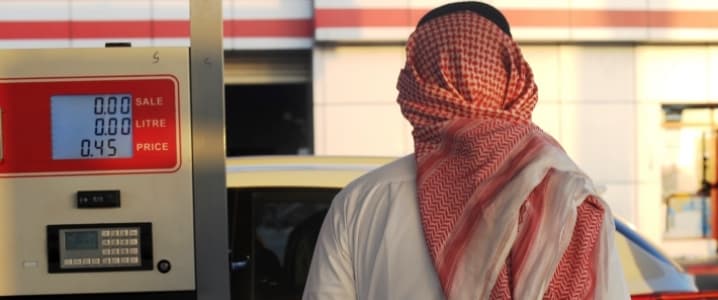Although Saudi Arabia has managed to narrow its budget deficit, the Kingdom continues to feel the fiscal pressure of low oil prices, and is mulling over the phasing out of gasoline subsidies, and making gas prices level with varying international prices, Bloomberg reported on Monday, citing a person familiar with the plan.
Under the plan, Saudi Arabia is said to be studying raising gasoline prices by the end of 2017 to bring them to parity with international prices—which would mean a rise of about 80 percent for octane-91 grade gasoline compared to current prices. A decision is expected this month or next, Bloomberg quoted the person with knowledge of the issue as saying.
According to Bloomberg’s source, the Saudis are planning a one-time hike of gasoline and jet fuel by the end of this year, while other fuel prices would be gradually increased between 2018 and 2021.
The Saudi authorities could cap increases of diesel and heavy fuel oil prices to spare the economy, as those fuels are heavily used in industry and power generation.
At the end of 2015, when Saudi Arabia was running a budget deficit of around 15 percent of its gross domestic product (GDP), the Kingdom started cutting its generous subsidies after the collapse of the oil prices resulted in wide budget gaps in the finances of the Middle Eastern producers. Related: China To Dictate Energy Growth In Coming Years
According to the International Monetary Fund (IMF), Saudi Arabia’s non-oil growth is expected to pick up to 1.7 percent in 2017, but overall real GDP growth is seen close to zero as oil GDP declines in line with Saudi Arabia’s pledge to reduce production as part of the OPEC/non-OPEC output cut deal.
The IMF expects that the plans for the energy price increases and non-oil revenue reforms would help the Saudis further cut the budget deficit. The deficit is expected to drop from 17.2 percent of GDP in 2016 to 9.3 percent of GDP in 2017, and to just under 1 percent of GDP by 2022, the IMF said, adding that “this assumes that the major non-oil revenue reforms and energy price increases outlined in the Fiscal Balance Program are introduced on schedule and that operational and expenditure savings identified so far by the Bureau of Spending Rationalizations are realized.”
By Tsvetana Paraskova for Oilprice.com
More Top Reads From Oilprice.com:
- Will This Climate Change Ruling Kill U.S. Coal?
- Mexico’s 2018 Election Could Derail Its Oil Boom
- Does Canada Need More Oil Sands Pipelines?


















